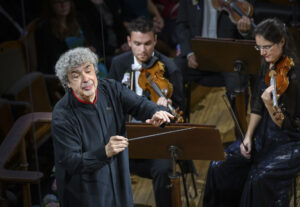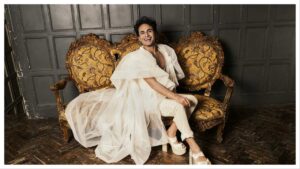
In Greek mythology, Icarus flew too close to the sun, ignoring his father’s warnings that his waxen wings would melt. He plunged to his death, a victim of his own hubris and ambition. Read this article for free: Already have an account? To continue reading, please subscribe: * In Greek mythology, Icarus flew too close to the sun, ignoring his father’s warnings that his waxen wings would melt.
He plunged to his death, a victim of his own hubris and ambition. Read unlimited articles for free today: Already have an account? In Greek mythology, Icarus flew too close to the sun, ignoring his father’s warnings that his waxen wings would melt. He plunged to his death, a victim of his own hubris and ambition.

Reception and panel discussion ● Thursday, 6-9 p.m. ● School of Art Gallery, University of Manitoba ● 136 ARTlab, 180 Dafoe Rd.
In a 1996 oil-on-canvas work by venerated visual artist Sheila Butler, the myth is flipped on its ear. In her hands, Icarus is a woman — and she has a parachute. is one of the works featured in , a retrospective exhibition co-curated by Pamela Edmonds and Patrick Mahon on view now at the School of Art Gallery at the University of Manitoba.
It’s also one of Edmonds’ personal favourites. “She has, as women tend to do, a plan and a backup,” Edmonds, the director and curator of the Dalhousie Art Gallery in Halifax, says with a laugh. “She’s not falling to her death.
She’s doing what we do as women: we find a way to make it work. I think that’s a beautiful analogy for the celebration of what women do in our world. “To have this sort of great mythological figure become a woman, but then also she’s not falling, is a beautiful way to change some of those iconic stories to include a different way of looking.
” Butler has modelled a different way of looking — and thinking — throughout her half-century career as an artist, art activist and educator. The pieces that compose the exhibition are paintings and works on paper spanning 35 years of that career. Patrick Mahon is curating the exhibit Sheila Butler: Other Circumstances.
“It’s a vivid slice of the kinds of work she did in drawing and painting, and I think it represents that sort of social and worldly wise engagement that she’s had throughout her whole life,” says Mahon, an artist, writer, curator and professor emeritus in visual arts at Western University in London, Ont. Butler, now in her late 80s, was born near Pittsburgh, Penn., and emigrated to Canada in 1962, where she had an indelible impact on the art world, establishing the Sanavik Arctic Co-operative in Qamani’tuaq (Baker Lake), Nunavut, and helping found MAWA (Mentoring Artists for Women’s Art) in Winnipeg, where she taught art.
That’s how Mahon met her; he was one of her first-year drawing students at the U of M in the late ’70s. The two stayed in touch and eventually became colleagues in the visual arts department at Western University. Edmonds met Butler as an emerging curator in Toronto.
Edmonds was working at the A Space Gallery, one of Canada’s oldest artist-run centres focused on socially engaged art and experimental practice, and Butler was on the board. “I was really taken with her vision in terms of bringing to Toronto and the organization, advocacy, inclusion, all of those things which have become more common in contemporary art in Canada now, but 25 years ago it really wasn’t on people’s radar in the same way. I was amazed to find out more about her own practice as an artist, as a mentor, as someone who was a big advocate for feminist art,” Edmonds says JOHN WOODS / FREE PRESS Both curators agree there is a timeliness about Butler’s art.
“When you look at Sheila’s work, you could imagine it being made by somebody with a very fresh, and I want to say young mind, somebody who is very insightful. In fact, she told me once she was giving a talk, this was a while back, and somebody said, ‘Oh, I thought you’d be younger,’” Mahon says. “There’s a real sense of precarity in terms of human life, on the planet, and a lot of her work deals with this sort of intangible, subconscious, repressed desire, and also about dealing with trauma, dealing with violence — all these things that are prevalent in our moment,” Edmonds says.
And she does this with human figures — figures, as Edmonds points out, that can be unsettling and grotesque. Butler, who was educated at Carnegie-Mellon University, takes her formal training in figure drawing — and an obvious love of comic books — and abstracts it. She often depicts female bodies in motion — not as reclining objects to be gazed at, but rather moving, doing and being.
JOHN WOODS / FREE PRESS Patrick Mahon was one of Butler's first-year drawing students at the U of M in the late ’70s. “They’re symbols for ourselves, our community, as people, and what we go through in our relationships. This sort of feeling of being between space and how do we navigate who we are, where we are, all those kinds of questions,” Edmonds says.
This exhibition puts a living legend and her work back into the public consciousness. “We tend to forget the people that made the inroads and fought on our behalf to open things up. Sometimes people don’t recognize we are further because of people like Sheila,” Edmonds says.
Edmonds and Mahon will be in Winnipeg for a panel discussion and reception Thursday from 6 to 9 p.m. at the gallery.
On Oct. 16, the School of Art Gallery will be offering a free figure-drawing workshop in partnership with MAWA featuring contemporary dancer and choreographer Carol-Ann Bohrn as the live model. Participants are asked to bring their own materials.
No registration is required, just show up. is on view until Oct. 26.
[email protected] Jen Zoratti is a columnist and feature writer working in the Arts & Life department, as well as the author of the .
A National Newspaper Award finalist for arts and entertainment writing, Jen is a graduate of the Creative Communications program at RRC Polytech and was a music writer before joining the in 2013. . Every piece of reporting Jen produces is reviewed by an editing team before it is posted online or published in print – part of the ‘s tradition, since 1872, of producing reliable independent journalism.
Read more about , and . Our newsroom depends on a growing audience of readers to power our journalism. If you are not a paid reader, please consider .
Our newsroom depends on its audience of readers to power our journalism. Thank you for your support..














